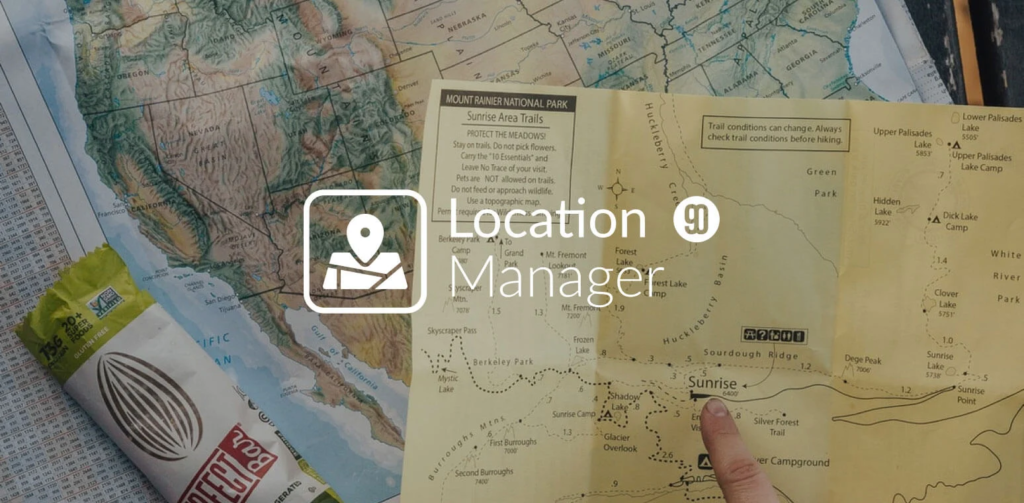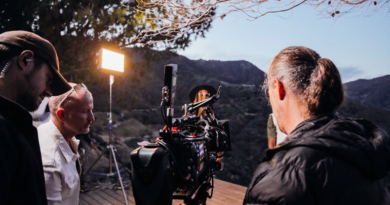Location Manager (1 years diploma)
Location Manager click here
Brief Job Description: Individuals in this job are responsible for filming/
production taking place on location. Their main tasks include evaluating various
locations and identifying those that are most suited for filming. The location
manager is in charge of set-up, logistics and coordination at the filming location.
Personal Attributes: This job requires the individual to understand production
techniques and the implications of various tasks on time, resources and budget.
The individual must have a background in film making or content production.
The individual must understand the logistics and facilities required during
filming and be able to assess a range of locations for their suitablity. The
individual should have a keen sense of visual imagery and photography, and
apply this to location selection. The individual must be an effective
communicator and be able to support the production unit in making relevant
decisions about the location.
Qualifications Pack For Location Manager

Keywords /Terms
Description
Budget Budget is an estimate of the total cost of production that may include a
break-up of cost components
Continuity Continuity represents the seemless transition from one shot to another
Copyright Laws A legal framework linked to intellectual property and the rights given to
creators of original products/ concepts
Financer An entity (individual or organization) that provides financing for a project
Labour Laws Legal norms governing the relationship between workers, employers,
trade unions and the government
Post-production Post-production is the final finishing phase of the production, where the
raw footage is edited, special effects are added, music and sound are
integrated, colour correction is done etc.
Props A property, commonly shortened to prop (plural: props), is an object
used on stage or on screen by actors during a performance or screen
production. In practical terms, a prop is considered to be anything
movable or portable on a stage or a set.
Screenplay Screenplay is the script coupled with key characteristics of the scene and
directions for acting
Script Script is a structured narrative of a story
Set The background/ scenery visible through the camera (for video
production) or directly to the spectator (for theatrical production)
Set Etiquette A set of guidelines that dictate how cast and crew should behave on set
and interact with each other

Target Audience Group of people at whom content/ adverting is aimed. A target audience
is typically defined by age, gender, economic classification, geography
and any other relevant parameters (e.g. Femals, aged 25-40, average
monthly household income INR 25,000-50,000, from Hindi speaking
states in North India)
Timelines Timelines is a listing of dates by which the production milestones/stages
need to be completed
Sector Sector is a conglomeration of different business operations having similar
businesses and interests. It may also be defined as a distinct subset of the
economy whose components share similar characteristics and interests.
Sub-sector Sub-sector is derived from a further breakdown based on the
characteristics and interests of its components.
Vertical Vertical may exist within a sub-sector representing different domain
areas or the client industries served by the industry.
Occupation Occupation is a set of job roles, which perform similar/related set of
functions in an industry
Function Function is an activity necessary for achieving the key purpose of the
sector, occupation, or area of work, which can be carried out by a person
or a group of persons. Functions are identified through functional
analysis and form the basis of OS.
Sub-functions Sub-functions are sub-activities essential to fulfill the achieving the
objectives of the function.
Job role Job role defines a unique set of functions that together form a unique
employment opportunity in an organization.
Occupational Standards
(OS)
OS specify the standards of performance an individual must achieve
when carrying out a function in the workplace, together with the
knowledge and understanding they need to meet that standard
consistently. Occupational Standards are applicable both in the Indian
and global contexts.
Performance Criteria Performance Criteria are statements that together specify the standard
of performance required when carrying out a task
National Occupational
Standards (NOS)
NOS are Occupational Standards which apply uniquely in the Indian
context.
Qualifications Pack
Code

Qualifications Pack Code is a unique reference code that identifies a
qualifications pack.
Qualifications Pack(QP) Qualifications Pack comprises the set of OS, together with the
educational, training and other criteria required to perform a job role. A
Qualifications Pack is assigned a unique qualification pack code.
Unit Code Unit Code is a unique identifier for an Occupational Standard , which
isdenoted by an ‘N’.
Unit Title Unit Title gives a clear overall statement about what the incumbent
should be able to do.
Description Description gives a short summary of the unit content. This would be
helpful to anyone searching on a database to verify that this is the
appropriate OS they are looking for.
Scope Scope is the set of statements specifying the range of variables that an
individual may have to deal with in carrying out the function which have
a critical impact on the quality of performance required.
Knowledge and
Understanding
Knowledge and Understanding are statements which together specify the
technical, generic, professional and organizational specific knowledge
that an individual needs in order to perform to the required standard.
Organizational Context Organizational Context includes the way the organization is structured
and how it operates, including the extent of operative knowledge
managers have of their relevant areas of responsibility.
Technical Knowledge Technical Knowledge is the specific knowledge needed to accomplish
specific designated responsibilities.
Core Skills/Generic
Skills
Core Skills or Generic Skills are a group of skills that are key to learning
and working in today’s world. These skills are typically needed in any
work environment. In the context of the OS , these include
communication related skills that are applicable to most job roles.
Core Skills/Generic
Skills
Core Skills or Generic Skills are a group of skills that are key to learning
and working in today’s world. These skills are typically needed in any
work environment. In the context of the OS , these include
communication related skills that are applicable to most job roles.
Assess Suitability of a Filming Location
Description This OS unit is about identifying possible locations for filming, conducting location
surveys (recces) and assessing suitability
Scope This unit/task covers:

Identifying locations for the following types of content: feature films, television
series, documentaries, advertisements, short films, radio programmes, live
events, field reporting, interviews and other non-scripted programming (on
television or radio), and any other forms of audio-visual production
Identifying and assessing suitability of the following types of facilities
o Studio space/ sound stages
o Outdoor locations
o Buildings, parking lots and other covered spaces
Performance Criteria (PC) w.r.t. the Scope
Element Performance Criteria
Assess suitability of
filming location
To be competent, the user/individual on the job must be able to:
PC1. Determine the total space/ floor area requirements based on the script and
creative brief and identify appropriate location options
PC2. Conduct a location survey (recce) and evaluate suitability on various factors
(typically using a pre-agreed checklist)
PC3. Prioritize locations with regard to their suitability for filming, and support
decision-making/ selection of an appropriate location
PC4. Contact film commissions/ other bodies to obtain necessary permissions
Knowledge and Understanding (K)
A. Organizational
Context
(Knowledge of the
company /
organization and
its processes)
The user/individual on the job needs to know and understand:
KA1. The vision and motivations of the creative team (Scriptwriter, Director,
Production Designer among others)
KA2. Production limitations such as constraints on budget, resources and time
availability and any specific limits on shooting locations
KA3. The role and contribution of key departments during filming,
interdependencies and reporting structures
B. Technical
Knowledge

The user/individual on the job needs to know and understand:
KB1. How to interpret the script and identify location requirements (based on the
space required, mood, historical context, natural backdrop etc.)
KB2. How to apply principles of visual imagery and photography to identify and
select appropriate locations
KB3. How to identify 4-5 options for each type of location (based on available
databases, prior experience and independent research)
KB4. How to conduct a location survey (recce) – typically using a pre-agreed
checklist of factors that need to be assessed
KB5. How to assess the accessibility of a location including availability of public/
private transport and parking space
KB6. How to check for adequate power supply (either through the grid or
generators), and corresponding requirements for wires and cables
KB7. How to check the location for facilities including availability of food and water,
rest areas, garbage disposal etc.
KB8. How to check the location for lighting, direction of sunlight, appropriate times
of day to shoot and requirements for artificial lighting
KB9. How to identify relevant frames and backdrops at the location (based on the
script and requirements for specific shots/ scenes)
KB10. How to check the location for ambient sound (recordings may be made to
assess sound level in a studio)
KB11. How to check the suitability of the location for transporting heavy equipment
(e.g. lights, grips and cameras) – e.g. the height, dimensions and any obstacles
that need removal
KB12. How to assess the location for weather patterns and any potential disruption
to filming due to rain, snow, extreme heat or other conditions
KB13. How to check the location for adequate storage space for safe and secure
storage of equipment and materials required for filming
KB14. How to identify relevant approvals and permissions (from local, state or
central authorities) required for filming at that location
KB15. How to maintain a record of all production-related documents including Non
Disclosure Agreements (NDA), legal permissions, proposals, insurance
contracts, team lists etc.
KB16. How to identify the insurance requirements for different types of locations,
and work closely with the finance department and other members of the
production unit to make sure required insurance is in place
KB17. How to ensure that the selected location minimize risks during production,
including those to the individual’s own health and safety and of the
production cast and crew
Skills (S)
A. Core Skills/
Generic Skills
Writing Skills

The user/ individual on the job needs to know and understand how to:
SA1. Take notes and mark-up the script for location requirements
SA2. Prepare a checklist to undertake the location survey (recce), take notes and
mark-up the checklist with findings from the recce
SA3. Use hand drawing and computer design techniques to create floor plans (i.e.
parking, sound stage, storage space, facilities etc.)
Reading Skills
The user/individual on the job needs to know and understand how to:
SA4. Interpret the script/ creative brief/ production concept/ schedule/ budget or
any other type of written material
SA5. Correctly read background information on the location, floor plans,
documentation regarding approvals and permissions etc.
Oral Communication (Listening and Speaking skills)
The user/individual on the job needs to know and understand how to:
SA6. Understand the creative vision of the Director/ Script writer and Producer
SA7. Understand the brief from the financer and any constraints/ limitations that
affect the location selection (e.g. time, people, materials, budget)
SA8. Communicate effectively with the key heads of department, propose
alternatives and agree on key decisions
B. Professional Skills Decision Making
The user/individual on the job needs to know and understand how to:
SB1. Make relevant decisions related to the area of work e.g. choice of location
based on suitability across a range of factors
Plan and Organize
The user/individual on the job needs to know and understand:
SB2. How to prepare a work schedule/ sequence of activities to help plan the
location survey (recce) effectively
Problem Solving
The user/individual on the job needs to know and understand how to:
SB3. Identify any problems with successful execution of the task and resolve them
in consultation with the relevant members of the production unit
Analytical Thinking
The user/individual on the job needs to know and understand:
SB4. How to assess the impact of selecting a particular location on the time and
budget of the production
Manage Live Programme Production
Description This OS unit is about coordinating activities and resources during the production of
live events and during live studio programming
Scope This unit/task is specific to producers responsible for live content production in
television. It covers:
Coordinating production activities and resources for the following types of live
content:
o Live Events: sporting events, cultural events, political events, business
events, conferences and seminars and other events of local, regional,
national or international importance
Live Studio Programming including news bulletins, sports commentary and studio
interviews
Performance Criteria (PC) w.r.t. the Scope
Element Performance Criteria
Manage live
production
To be competent, the user/individual on the job must be able to:
PC1. Understand the technical requirements for live programme production and
correctly estimate production requirements

PC2. Conduct checks prior to the event to ensure that production can take place
smoothly and any needed adjustments are made
PC3. Co-ordinate among multiple teams and individuals, sometimes in a high
pressure environment and successfully maintain continuity through the event
Knowledge and Understanding (K)
A. Organizational
Context
(Knowledge of the
company /
organization and
its processes)
The user/individual on the job needs to know and understand:
KA1. The vision and motivations of the creative team (Scriptwriter, Director,
Production Designer among others)
KA2. Production limitations including details of the location where the event will
take place and any constraints on budget, resources and time availability
KA3. The role and contribution of key departments involved in production,
interdependencies and reporting structures
B. Technical
Knowledge
The user/individual on the job needs to know and understand:
KB1. How to assess live production requirements and create a list of equipment,
materials and other resources required
KB2. How to estimate the human resource requirements for live programme
production
KB3. How to assess the suitability of equipment for live production and the
required technical specifications (e.g. high speed cameras for production of
sporting events)
KB4. How to assess ambient sound at the location and make appropriate
arrangements for sound recording
KB5. How to operate (or instruct someone to operate) a video mixer to switch
between different visual streams
KB6. How to operate (or instruct someone to operate) an audio mixer to switch
between different audio streams
KB7. How to operate (or instruct someone to operate) graphics software and
machines that allow for on screen graphics, live updates etc.
KB8. Available file formats for music/ content, specific requirements for HD
production or other specialized programmes and what file formats are
acceptable for the current event
KB9. Available connectivity options (e.g. satellite, leased lines etc.) to receive audiovisual feeds from various sources
KB10. Available play-out equipment and software for broadcasting live events
KB11. How to ensure that all production activities minimize risks, including those to
the individual’s own health and safety and of the production cast and crew
Skills (S)
A. Core Skills/
Generic Skills
Writing Skills
The user/ individual on the job needs to know and understand how to:
SA1. Take notes and mark-up scripts/ concepts to identify equipment, material and
people requirements for live programme production
SA2. Prepare call sheets, task lists and other types of check lists
Reading Skills
The user/individual on the job needs to know and understand how to:
SA3. Interpret the script/ creative brief/ production concept/ schedule/ budget or
any other type of written material
SA4. Correctly read user manuals for software and specialized equipment required
for live programme production (e.g. mixers, on screen graphics, playout etc.)
Oral Communication (Listening and Speaking skills)
The user/individual on the job needs to know and understand how to:
SA5. Understand the creative vision and objective behind capturing the live event
SA6. Identify any constraints/ limitations that affect the production (e.g. time,
people, materials, location, budget)
SA7. Communicate effectively with the entire production unit, propose
alternatives and agree on key decisions
B. Professional Skills Decision Making
The user/individual on the job needs to know and understand how to:
SB1. Make relevant decisions related to the area of work e.g. sequencing of
activities, choice of equipment, production techniques, choice of location,
vendor selection etc
Plan and Organize
The user/individual on the job needs to know and understand:
SB2. How to prepare a work schedule/ sequence of activities to help the entire
production unit plan their work during the event
SB3. How to build a contingency plan based on knowledge of similar live events
and production risks
Problem Solving
The user/individual on the job needs to know and understand how to:
SB4. Identify any problems with successful execution of the task and resolve them
in consultation with the relevant members of the production unit
Analytical Thinking
The user/individual on the job needs to know and understand:
SB5. How to assess the impact of selecting production techniques, cast, crew,
vendors and suppliers on the time, location and budget of the production
SB6. How to assess the impact of selecting production techniques, cast, crew,
vendors and suppliers on continuity through the event.
Coordinate Production Activities
Description This OS unit is about coordinating production activities and resources for filming,
monitoring progress and highlighting variances to the schedule and budget
Scope This unit/task covers coordinating production activities and resources for the This
unit/task covers:
Coordinating production activities and resources for the following types of
productions: feature films, television series, documentaries, advertisements,
animated films, short films, live events, field reporting, interviews and other non
scripted programming (on television or radio), and any other forms of audiovisual production
Performance Criteria (PC) w.r.t. the Scope
Element Performance Criteria
Coordinating
production activities
To be competent, the user/individual on the job must be able to:
PC1. Break-down the production schedule into a daily task list and manage day to
day activities during filming
PC2. Lead the full production unit toward successful completion of their tasks
PC3. Track progress of filming against the production schedule and budget
PC4. Anticipate potential delays/ budget overruns, escalate these to the relevant
departments and identify ways to minimize them
Knowledge and Understanding (K)
A. Organizational
Context
(Knowledge of the
company /
organization and
its processes)
The user/individual on the job needs to know and understand:
KA1. The vision and motivations of the creative team (Scriptwriter, Director,
Production Designer among others)
KA2. Production limitations including details of shooting locations and any key
constraints on budget, resources and time availability
KA3. The role and contribution of key departments during filming,
interdependencies and reporting structures
B. Technical
Knowledge
The user/individual on the job needs to know and understand:
KB1. How to break down the production schedule into a daily task list with details
of personnel, equipment and materials required on set
KB2. Available options for transporting equipment and material securely to the
location and ensuring safe storage
KB3. How to coordinate logistics for the cast and crew including travel, ground
transport, accommodation, facilities on set including rest areas and catering
KB4. How to coordinate logistics for child artistes and their accompanying adults
including travel, ground transport, accommodation, facilities on set including
rest areas and catering
KB5. How to coordinate logistics for any animals being used for filming including
the number of wranglers/ handlers required, their travel, ground transport,
accommodation, facilities on set including rest areas and catering and any
permissions required from local, state or central authorities for principal







